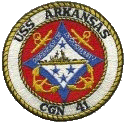Riun T
Posts: 1848
Joined: 7/31/2004
Status: offline

|
quote:
ORIGINAL: KG Erwin
OK, Riun, I see your point. I have NOT tested my so-called "perfect" battalion landing team thru an entire campaign.
I'm still reading thru campaign studies, and I just got a great book describing the use of tanks by the Marines.
I won't bore you with a dissertation, but it seemed that the development of proper tank-infantry coordination for these unique missions was designed by nothing more than trial and error. Little to no training was conducted in tank -infantry coordination prior to the landing on Guadalcanal. Hell, the tankers were more concerned about being landed safely on the beach.
As for my "broad -front advances", man, that's the way the USMC did it back then. The limited fields of observation in a jungle environment meant that gaps had to be covered, to prevent Japanese infiltration. There wasn't much chance for clever maneuvering.
{Gaps don't have to be covered if you force them to have to look for you,given that the whole reason they infiltrate is cause their looking for u, having a broad front in the limited vis. means that your enemy can assume that if he masses a force in one general ball infront of any particuler point of your wall he'll bounce back against the felt firepower of that section but eventually breach the sector with mass of men.}
Now, some attempts were made to outflank the enemy, but communications were not good, so companies or battalions ended up getting misdirected, and proper coordination of a multi-battalion attack was a nightmare.
As for in-depth minefields, the Japanese never used them.{ I'll argue this some in the scence that yes your right they never really sewd whole mine fields but as you said earlier they where masters of layered bunker/tunnel/cave interlocking fields of fire and my uncle tony fought in burma and said they always mined beaches but would boobytrap and pungi stick pit in inland travelways, and a stake pit is way worse than mines IMHO} They scattered them here and there, but nothing like what we encountered in Europe. However, they WERE masters at using terrain to construct interlocking fields of fire -- the object was not to obstruct the advancing enemy, but to lure him into a killing field. Sneaky bastards, indeed.
Finally, an amphibious assault was thought to be a suicidal venture prior to WWII. The example of Gallipoli was ever-present.
In the second phase of the Pacific War, there is no room for subtlety, except maybe on a limited tactical level. Every landing was nothing more than a direct frontal assault, with victory being achieved by massive application of firepower delivered by direct fire and close assault.
Now, my friend, if you've come up with a better way to use finesse in these situations, please let me know. WE DEFINATELY GOTTA TALK MORE RT RT
|
 Printable Version
Printable Version













 JUST got to add in the other poke I have on u GUNNY,, they'le never get anywhere with the mines button off
JUST got to add in the other poke I have on u GUNNY,, they'le never get anywhere with the mines button off  RT
RT






 connections
connections




 } and I was just poking fun on him for this. TWOTRIBES i'm really suprized that I came across badly and hope you feel free to slap me somemore
} and I was just poking fun on him for this. TWOTRIBES i'm really suprized that I came across badly and hope you feel free to slap me somemore New Messages
New Messages No New Messages
No New Messages Hot Topic w/ New Messages
Hot Topic w/ New Messages Hot Topic w/o New Messages
Hot Topic w/o New Messages Locked w/ New Messages
Locked w/ New Messages Locked w/o New Messages
Locked w/o New Messages Post New Thread
Post New Thread